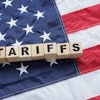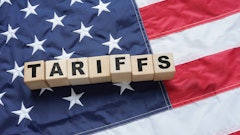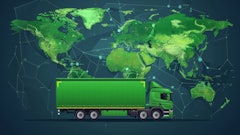Philadelphia, Pa.—July 1, 2014—The fire that occurred June 20 at the distribution center of global online fast-fashion and beauty retailer, ASOS, highlights many of the risks to which modern supply chains are exposed.
ASOS keeps 70 percent of its stock in Barnsley, England, and it is believed that the fire could have affected more than $50 million of inventory. The facility is over 600,000 square feet and the fire, which police believe was deliberately set, spread to four floors. Although the website is up and running after being disrupted, ASOS's share price fell by 2 percent before bouncing back, proving just how much disaster can affect a company.
John Manners-Bell, CEO of Transport Intelligence and author of the recently published book Supply Chain Risk: Understanding Emerging Threats to Global Supply Chains (published by Kogan Page), commented, "One of the problems of operating global distribution centers is the concentration of risk in one location. Centralization of logistics operations makes sense on an operational basis in terms of keeping stock levels low and reducing redundancy. However, if you start costing in external risks, such as fires, floods and security issues, then suddenly it doesn't look so smart. As it is very difficult to quantify the financial cost of Black Swan events, many companies pretend that the risks don't exist. Although ASOS had insurance and the disaster could have been a lot worse, there are still implications for the retailer in terms of customer service and reputation."
He went on to add, "To get back up and running so quickly, ASOS obviously had exceptional contingency plans in place, no doubt helped by an earlier experience when its previous distribution center in the UK was badly damaged by an oil depot blast. However, this further disaster demonstrates the systemic fragility of many global supply chains and perhaps suggests that it would be sensible to spread risk over a number of locations, despite an increase in internal supply chain costs."
In Supply Chain Risk, Manners-Bell assesses the various sources of external threat to the supply chain, including environmental, geopolitical, economic and technological, and describes how to deal with them strategically. "It's not about preparing your supply chain for a known threat, it's about making it resilient against all risks. This requires a great deal of scenario planning, putting processes in place, and implementing the technology to sense and respond to events as they happen. It has to go to the very core of a company's supply chain strategy," he said.
John Manners-Bell is the CEO of Transport Intelligence, a supplier of market solutions to the global logistics industry. He is chairman of the Supply Chain Council of the World Economic Forum, and an advisor to the UN and the European Commission. He is the author of Global Logistics Strategies, the forthcoming Logistics and Supply Chains in Emerging Markets and the recently published Supply Chain Risk: Understanding Emerging Threats to Global Supply Chains, 978-0-7494-7110-1 (all published by Kogan Page).




![Figure 1. [Source: The Chemistry of Strategy: Strategic Planning for the Not-Yet Fortune 500, ©John W. Myrna, published in 2014 by Global Professional Publishing Ltd.]](https://img.sdcexec.com/files/base/acbm/sdce/image/2014/06/replacement-product-timeline_11502795.png?auto=format%2Ccompress&fit=crop&h=167&q=70&w=250)














